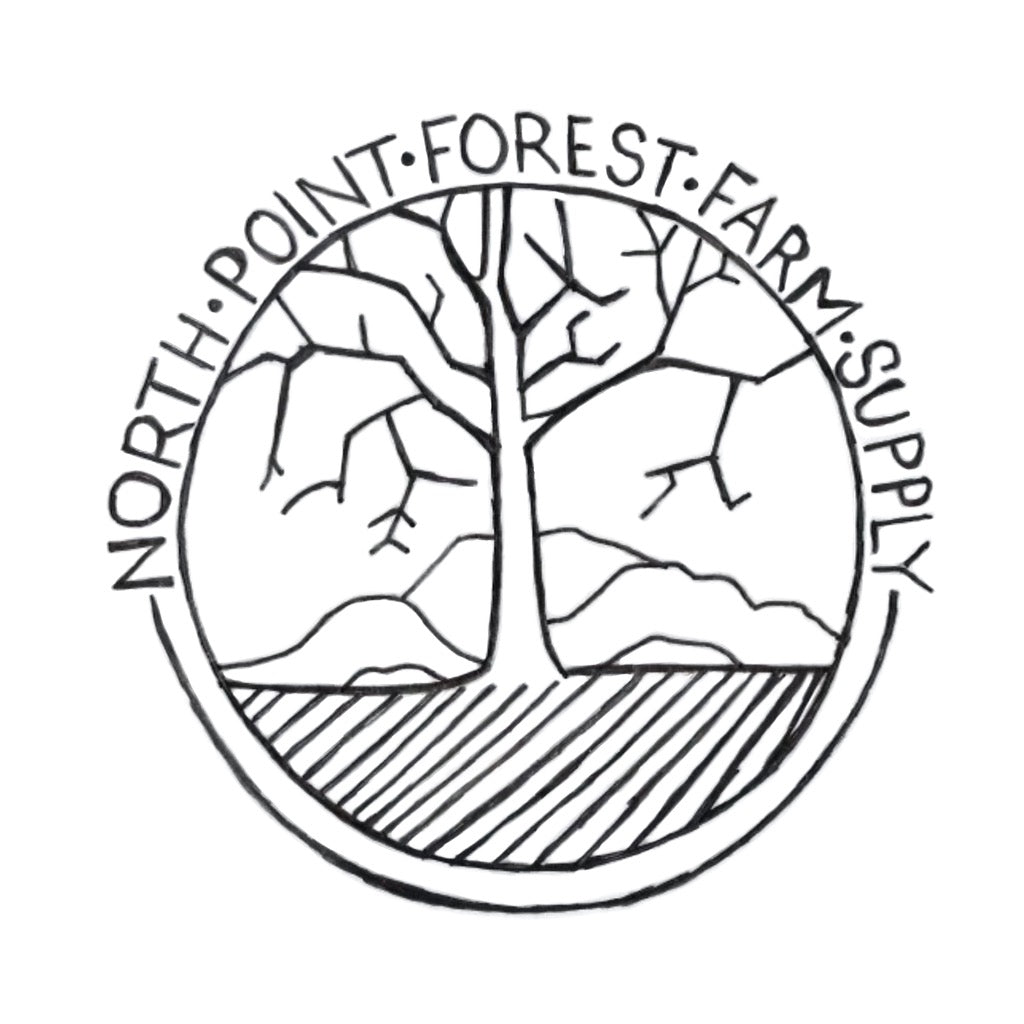Our Methods
As a research-driven nursery, we're constantly experimenting in order to breed superior plants that are optimized to succeed.
Below, we outline the beliefs and practices that inform our work and provide sources for those interested in broader conversations within the agroforestry industry.

To download a shareable PDF with all the information below, please click here.
Collapsible content
Why Breed?
Breeding plants for desired traits is an ancient practice. In tree crops, desired traits include:
- Advancing disease resistance
- Breeding for size of fruit
- Productivity
- Sensory benefits (taste, smell, look)
- Speed of growth
- Hardness
Breeding for desired traits is critical for hazelnut, chestnut, and walnut tree production in particular because these species all have high potential for commercial success.
Therefore, high-quality nuts and high performing plants are required.
Additionally, hazelnuts, chestnuts and walnuts have suffered from catastrophic diseases issues in the past including blight.
Our Approach
We select cultivars of known resistance and often full immunity to blight and other issues. These “select” or “enhanced” trees are then bred for commercial applications.
Unlike annual crops, the speed at which desired traits can be realized varies based on species and propagation techniques.
We achieve advanced genetics using the methods we feel are best suited to each species and circumstance.
Our Techniques
Controlled Crossing:
- Hyperlocal but difficult to test in real time. Controlled crossing is the result of seed orcharding. We are currently in the developmental phase of this aspect of the project. CLICK HERE for more on bio-regionality & seed orcharding.
Improved Seed Sourcing:
- Genetic variability, highest transplant and growth success. Growth rate variability requires a higher percentage of trees for initial planting with the expectation of culling and loss via predation.
Grafting, Cloning, Root Cutting, Layering:
- Identical match leads to predictable trait replication, risk of failure and monocropping. Can be used in moderation rather than industry standard. CLICK HERE for more info on grafting.
Our Findings
Our research indicates that larger seedling plantings better mimic natural colonialization tendencies and outperform grafted trees.
Trees planted along edges, trees grown with proper living soil, and trees grown in association with mycelium relationships grow faster and survive weather incidents at higher rates. (This follows the pioneering work of Susann Simard, from whom we draw inspiration).
Bud/chip field grafting is among the most durable.
***Please contact us if you are interested in our literature recommendations to pursue your own chip budding!
Our Seeds
We are fortunate to have been granted access to seeds from multiple locations of select mother trees. In addition, we have traveled the U.S. meeting with growers and industry leaders, developing relationships and our seed collection along the way.
Of note are selections from the JOHN W. HERSHEY collection.
Learning from indigenous breeders, “John Hershey was a nut tree nurseryman who, in his time, became a national authority in the propagation and care of nut trees, not only for the benefit of humans but also as a basis of feed for livestock.”
In conjunction with fellow nurseryman and researcher Dr. J. Russel Smith of the University of Pennsylvania, Hershey set the stage for the agroforestry work we continue today.
We are also building on the work of John Gordon, The University of Oregon, Cornell, Penn State, Yale Forestry, and others.
Finally, we collect from wild trees that we or our partners identify. Suggest a partnership HERE.
Our Current & Upcoming Research Projects
Our principle scientist, Dr. Justin Dowdall, is currently focused on exploring;
- Potential of on grade hügelkultur (hill culture) plantings for chestnut seedlings.
- Polyculture plating for integrated pest management.
- Air prune box design iterations and explorations of affordable options for rodent control during germination sequences.
- High tunnel zone shifting for Asimina triloba germination practices in zone 5/4 regions of temperate forest.
- Rhizome barriers using Symphytum (comfrey) for tree companion plantings and weed prevention.
- Success and potentials of edible understory plantings of perineal berry culture for mixed orchard plantings.
- Gravity-fed drip irrigation design applications for air pruning beds.
- Free planting for wildlife support in orchard settings to deter nut loss utilizing black walnut, oak, and hickory.
- Breeding hazelnuts
- Potential of Araucaria araucana trees in upstate New York using deep mulching and individualized winterizing techniques.
- Multiple other experimental plantings including east coast Redwood plantings.
Thinking big?
We heavily discount bulk orders.
